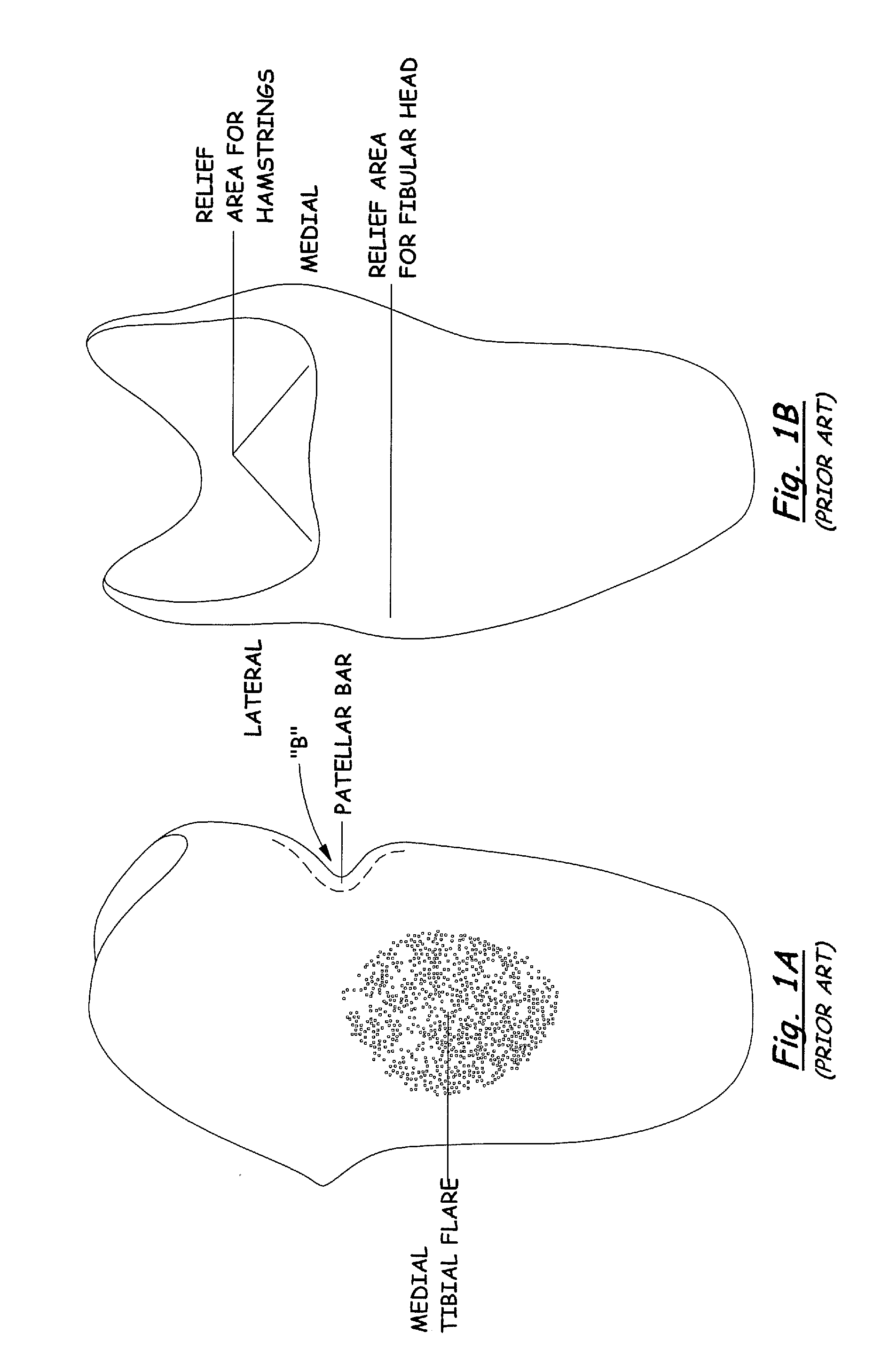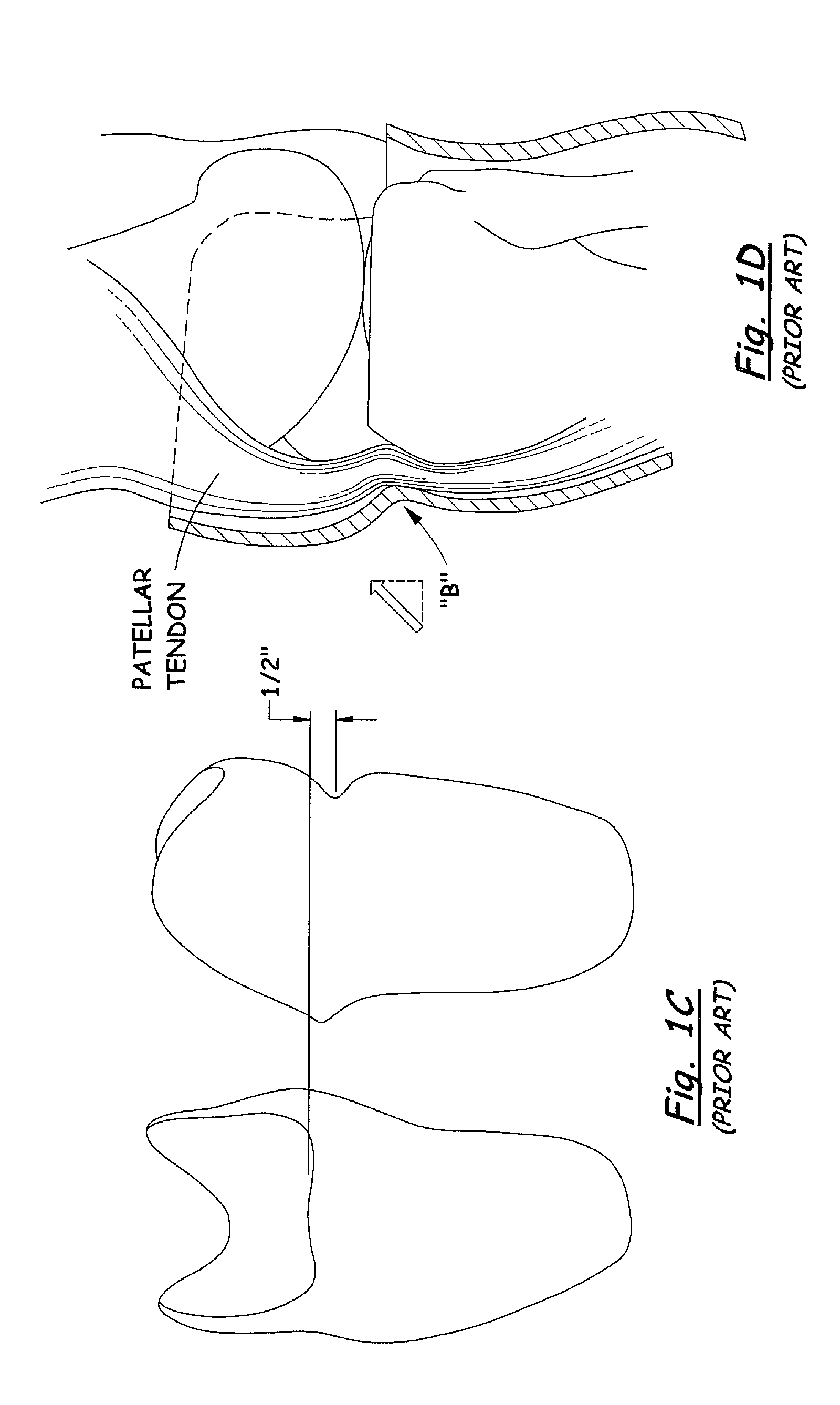Transtibial socket for external prosthesis
a technology of external prosthesis and transtibial socket, which is applied in the field of lower limb external prosthesis, can solve the problems of lack of rotational control, reduced range of motion, etc., and achieve the effects of reducing pressure on the patellar tendon, reducing curvature and/or shape, and eliminating or de-emphasizing the patellar bar
- Summary
- Abstract
- Description
- Claims
- Application Information
AI Technical Summary
Benefits of technology
Problems solved by technology
Method used
Image
Examples
Embodiment Construction
[0024]Referring to FIGS. 1A-D, and 2-5, one may see examples of prior art sockets with embodiments of tendon-support hard socket wall ledges or inward-curvature, called “patellar bars” as discussed above. Referring to FIGS. 2-5, socket 10 has a top edge 12 and, near the top edge, is the concave (from the outside) bar B. As discussed above, the bar B need not always be so close to the top edge 12, as illustrated in FIGS. 1A-D. Also, there may be ways of making a prior art patellar bar, other than curvature of the socket wall, for example, placement or molding of additional material at the inner wall of the socket to provide said “ledge” against which the patellar tendon rests / pushes.
[0025]The bar B provides a substantially-horizontal “shelf”15 on the inside of the socket against which the patellar tendon is placed. One may see, especially in FIGS. 2 and 3, that the top edge in the region of the prior art bar B (that is near the top edge TE) is typically a gentle, large-radiused edge,...
PUM
 Login to View More
Login to View More Abstract
Description
Claims
Application Information
 Login to View More
Login to View More - R&D
- Intellectual Property
- Life Sciences
- Materials
- Tech Scout
- Unparalleled Data Quality
- Higher Quality Content
- 60% Fewer Hallucinations
Browse by: Latest US Patents, China's latest patents, Technical Efficacy Thesaurus, Application Domain, Technology Topic, Popular Technical Reports.
© 2025 PatSnap. All rights reserved.Legal|Privacy policy|Modern Slavery Act Transparency Statement|Sitemap|About US| Contact US: help@patsnap.com



